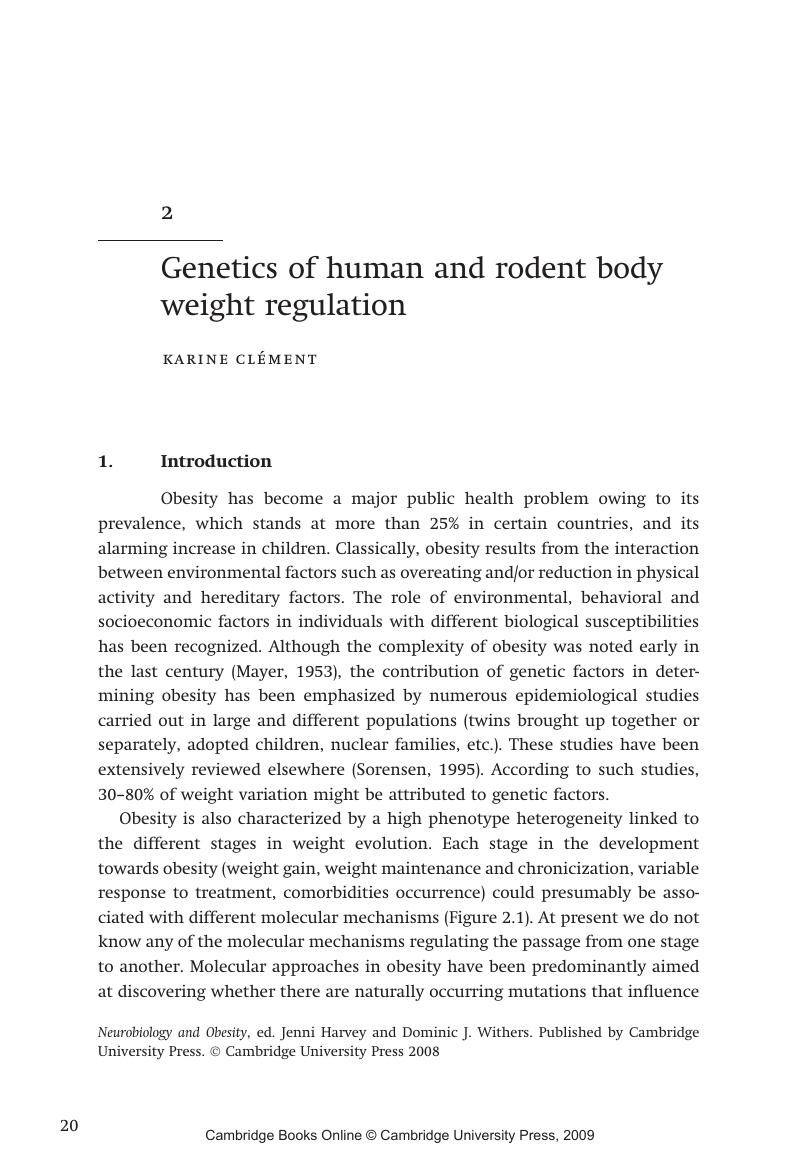Book contents
- Frontmatter
- Contents
- Preface
- List of contributors
- 1 Introductory chapter
- 2 Genetics of human and rodent body weight regulation
- 3 Hypothalamic control of energy homeostasis
- 4 Leptin and insulin as adiposity signals
- 5 Convergence of leptin and insulin signaling networks in obesity
- 6 Diet-induced obesity in animal models and what they tell us about human obesity
- 7 Melanocortins and the control of body weight
- 8 Role of opiate peptides in regulating energy balance
- 9 Ghrelin: an orexigenic signal from the stomach
- 10 Central nervous system controls of adipose tissue apoptosis
- 11 Potential therapies to limit obesity
- Index
- References
2 - Genetics of human and rodent body weight regulation
Published online by Cambridge University Press: 15 September 2009
- Frontmatter
- Contents
- Preface
- List of contributors
- 1 Introductory chapter
- 2 Genetics of human and rodent body weight regulation
- 3 Hypothalamic control of energy homeostasis
- 4 Leptin and insulin as adiposity signals
- 5 Convergence of leptin and insulin signaling networks in obesity
- 6 Diet-induced obesity in animal models and what they tell us about human obesity
- 7 Melanocortins and the control of body weight
- 8 Role of opiate peptides in regulating energy balance
- 9 Ghrelin: an orexigenic signal from the stomach
- 10 Central nervous system controls of adipose tissue apoptosis
- 11 Potential therapies to limit obesity
- Index
- References
Summary

- Type
- Chapter
- Information
- Neurobiology of Obesity , pp. 20 - 51Publisher: Cambridge University PressPrint publication year: 2008



